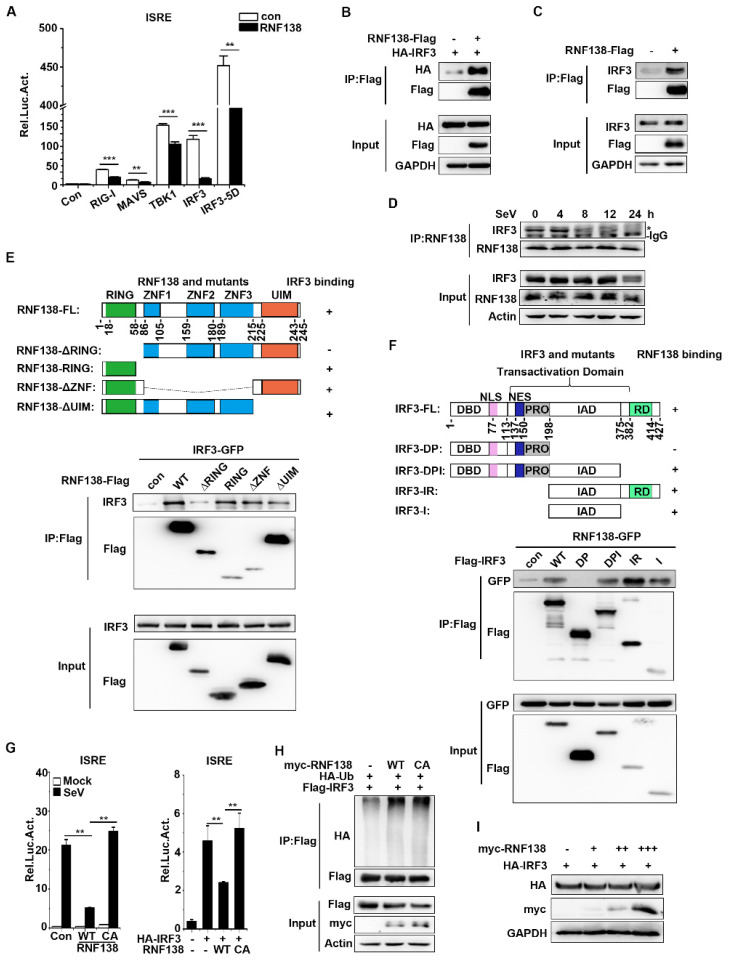Figure 4.
RNF138-mediated virus-triggered signaling at the level of IRF3. (A) The overexpression of RNF138 inhibited RIGI-, MAVS-, TBK1-, IRF3-, and IRF3-5D-mediated signaling. HEK293T cells were transfected with RNF138 or control plasmids together with the ISRE reporter and the indicated plasmids. Luciferase assays were performed 24 h after transfection. (B) Co-immunoprecipitation analysis of the interaction between RNF138 and IRF3 in HEK293T cells transfected with HA-IRF3 and RNF138-Flag or the control vector for 24 h. (C) Co-immunoprecipitation analysis of the interaction between RNF138 and IRF3 in HEK293T cells transfected with RNF138-Flag or control vector for 24 h. (D) Endogenous immunoprecipitation analysis of the interaction between RNF138 and IRF3 in HEK293T cells infected with SeV for the indicated times. * indicates the location of IRF3. (E,F) Domain mapping of the interaction of RNF138 with IRF3. HEK293T cells were transfected with the indicated truncations before co-immunoprecipitation and immunoblotting analysis with the indicated antibodies. The schematic presentations of the RNF138 and IRF3 truncations are shown at the top. (G) The effects of RNF138-WT and RNF138-CA (C18A/C54A) on the SeV-induced or IRF3-mediated activation of ISRE. HEK293T cells were transfected with the ISRE reporter and a control, RNF138-WT and RNF138-CA plasmids for 24 h, and then infected with SeV for 12 h (left), or transfected with the ISRE reporter and HA-IRF3 together with a control, RNF138-WT and RNF138-CA plasmids for 24 h (right panel) before luciferase assays. (H) The effects of RNF138 and its CA mutants on the polyubiquitination of IRF3. HEK293T cells were transfected with Flag-IRF3 and HA-Ub together with the control, RNF138-WT and RNF138-CA plasmids for 24 h, followed by immunoblotting and co-immunoprecipitation analysis with the indicated antibodies. (I) Immunoblot analysis at the protein level of IRF3 in HEK293T cells transfected with HA-IRF3 in fixed amounts and myc-RNF138 in different dosages. ** p < 0.01, *** p < 0.001 (unpaired t-test). Data represent at least two experiments with similar results (mean ± SD, n = 3 independent samples in (A–C,G)).

